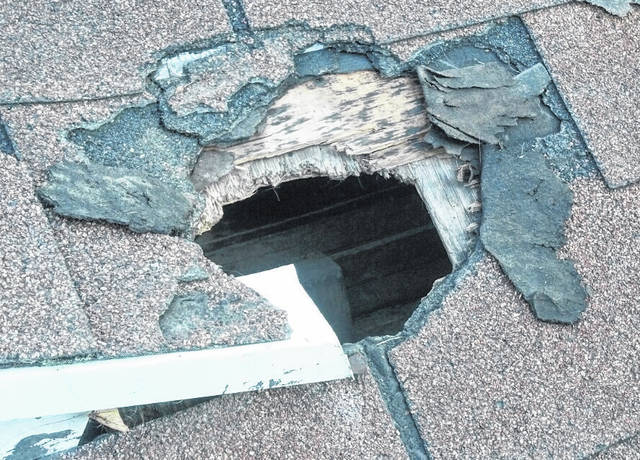
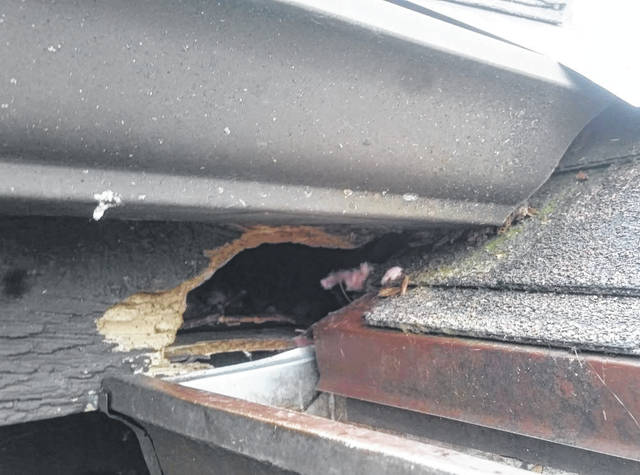
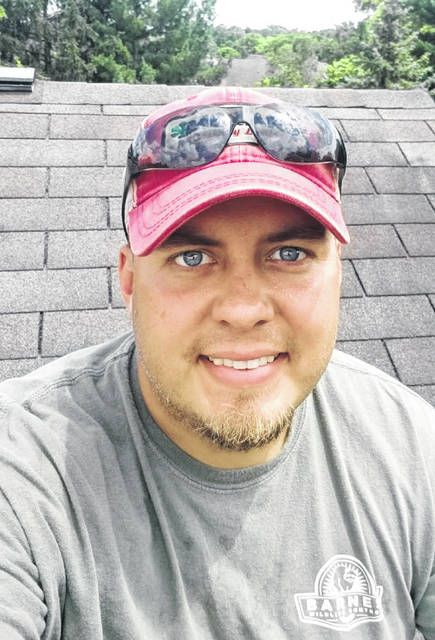
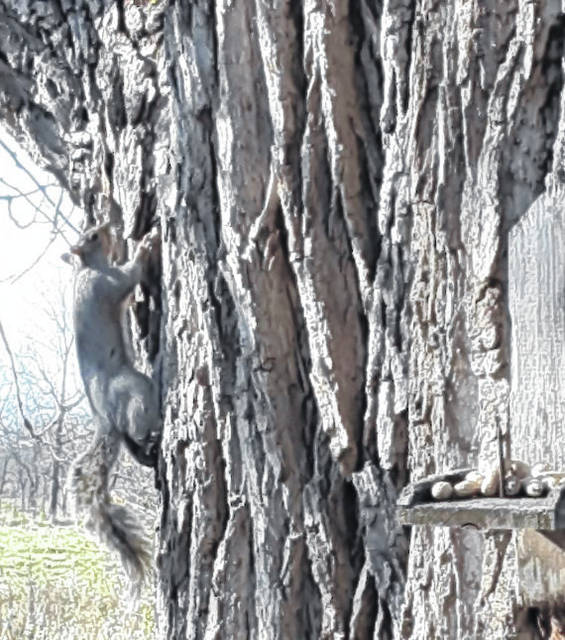
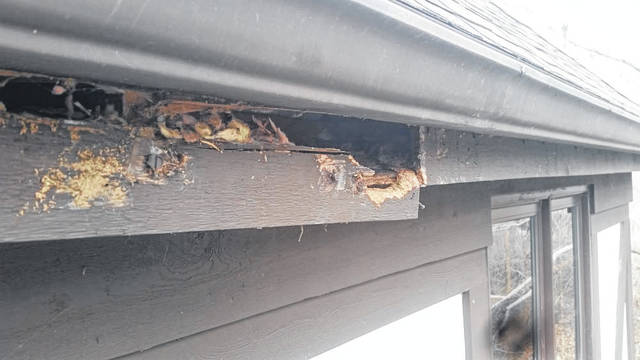
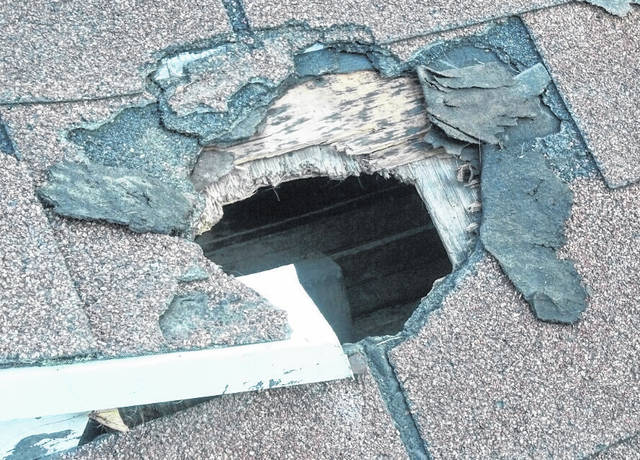
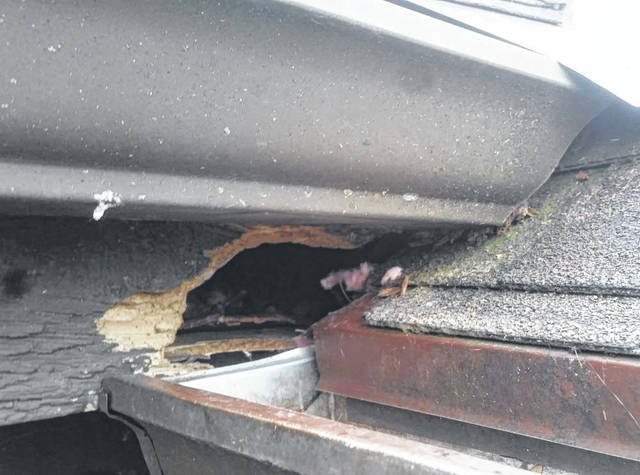
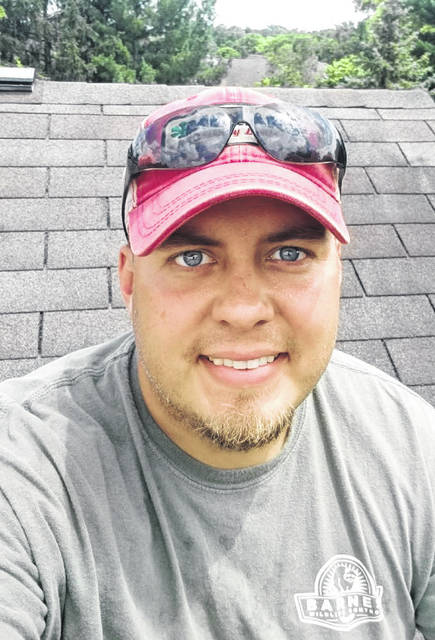
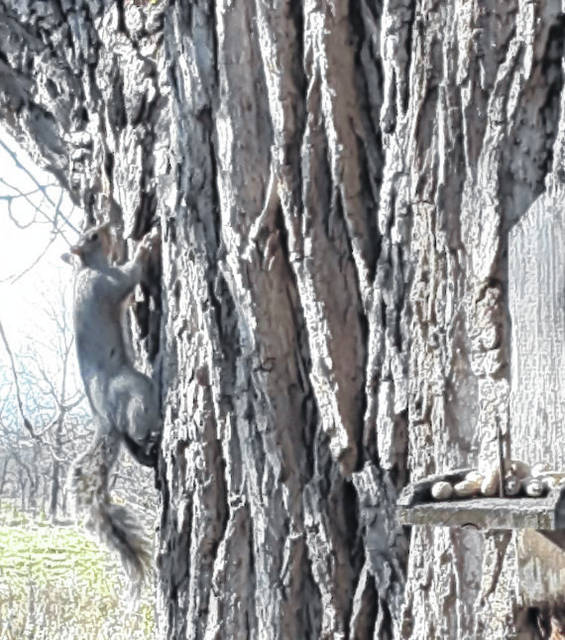
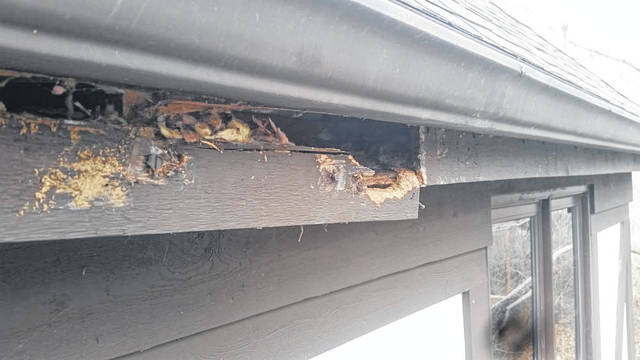
DARKE COUNTY — As winter approaches, Darke County property owners may discover that when squirrels scurry about in the daylight hours on trees, rooftops, fences, or electric poles, they often seek to do more than innocently bury their nuts in backyard flowerbeds or shamelessly raid the nearest bird feeder. Scratching noises heard late at night or at the crack of dawn may indicate the presence of such “woodland squatters” making their own ‘winter palace’ within the walls, attic or crawl space of your dwelling. Ignoring these tell-tale sounds may lead to many sleepless nights and homeowner headaches, interior and exterior damage and repair costs, requiring the services of a qualified professional to “evict” these unwanted intruders who dare to invade and occupy one’s peace of mind and personal space.
Neighborhood wildlife, such as birds, squirrels, raccoons, or bats, will take advantage of any “weak links” in and around the home, and exploit any areas where they may gain entry. Jacob Barnes, owner of Barnes Wildlife Control, offers timely advice to property owners as the change of seasons approaches.
“The most common causes are from construction gaps that allow critters a chance to pry or nose their way into the house,” explained Barnes. “Other causes for entry are from lack of maintenance on their home such as roof, gutters, and roof vents. Many people don’t realize that homes require upkeep in areas that are often out of sight. Caulking peels, flashing lifts up in strong winds, gutters get clogged leading to wood rot, and all of these things can lead to animal intrusion.”
Homeowners will often try to “deal with” the nuisance wildlife themselves, setting traps and bait, before calling a removal specialist. “Dealing with nuisance animal pests on your own is perfectly fine as long as you understand and follow the laws set by the state and target the actual animals causing your problem,” explained Barnes. “Many homeowners run to Rural King or TSC and buy a trap and set it out in the wrong location with incorrect bait to capture their nuisance critter, only to end up catching the neighbor’s cat or other animals that aren’t causing the problem. Any professional company should be employing proper baiting tactics and positive set trapping (setting trap directly over entry points) when possible to reduce the capture of non-target animals.”
The damage caused by the neighborhood wildlife can be extensive, and if not removed by a trained professional, it can lead to more extensive damage and financial headaches for the property owner.
“Wildlife causes many forms of damage both inside and outside a home,” said Barnes. “Shingle and roof vent damage is very common as they tear their way into the attic. Once inside a dwelling, attics are the most damaged area we see on our inspections.”
In his over three decades of wildlife removal experience, Barnes noted that certain areas of one’s home may be more vulnerable to extensive damage and costly repairs.
“Compression of insulation, chewed wiring, damaged HVAC duct work, and fecal matter or urine deposits ruin drywall ceilings; not to mention the Zoonotic disease risks occupants can be exposed to,” explained Barnes. “The average cost to remove a raccoon from a home is around $300; but repairs to the damage they cause can go into the thousands of dollars depending on the severity and size of area to be repaired.”
Barnes also commented on the specific damage done by bats, which roost in homes, barns, and office buildings, and are a common problem throughout the many counties in the Dayton and surrounding areas. Barnes’ company recently helped remove an entrenched bat colony from the historic Arcanum Opera House. “Our specialty is bat control services, ranging from small brick ranch homes to giant 19th century churches,” said Barnes. “Bats are very crafty and will enter gaps as small as a 3/8 of an inch, and carry many diseases, so it’s not an animal you want living inside your home, business, or place of worship.”
Once nuisance wildlife has been removed, property owners must deal with the expense and reality of the aftermath, weighing the cost of procrastination against that of prevention and maintenance. “The best preventative measure once the animals are removed is exclusion repairs.” said Barnes, noting that his company offers repairs for practically everything an animal will damage.“Keeping them out for good is our #1 priority.”
Barnes also recommends that homeowners schedule annual inspections, to keep ahead of any potential areas that may have opened up during the last 12 months. “We inspect the entire house from top to bottom and inside the attic and crawlspace if evidence of pests are found.”
Nuisance wildlife is more active during certain times of the year, so it is important to schedule an inspection as early as possible, to avoid a delay. “We strive to provide same day service, but we do get extremely busy during peak times.” Barnes added.
Darke County Chief Animal Control Officer, Robert Bair, does get calls regarding area wildlife, but encourages people to contact the Ohio Wildlife office. “Here, at the Darke County Animal Shelter, we deal only with homeless, stray, or unwanted dogs.”
Jeff Wenning, State Wildlife Officer for the Darke County area, recommends that residents who face problem nuisance wildlife to visit on the web at www.wildohio.gov, or call 1-800-WILDLIFE.
To reach Jacob Barnes, call Barnes Wildlife Control at 937-340-1867, visit on the web at barneswildlifecontrol.com, or email [email protected]









